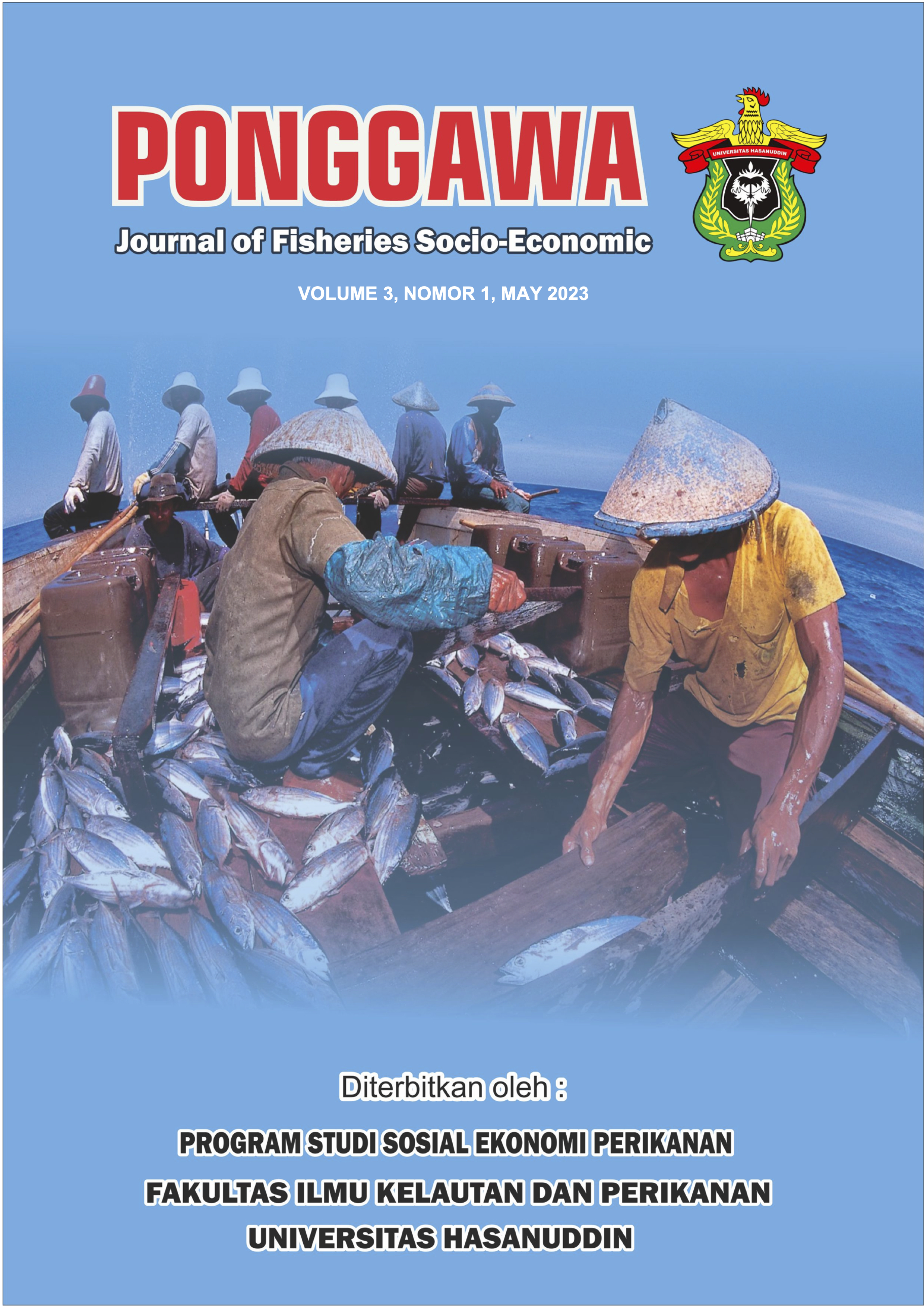A Study of The Fish Supply Chain at The Paotere Fishing Port of Makassar City
DOI:
https://doi.org/10.35911/ponggawa.v3i1.18660Keywords:
supply chain, paotere, information flow, financial flow , goods flowAbstract
This study aims to determine (1) the flow of information and finance, (2) the main problems that occur in supply chain activities at PPI Paotere, and (3) supply chain models at PPI Paotere. This research was conducted in March 2021 at PPI Paotere, Makassar City. The type of research used is survey research using a quantitative approach. The sampling method used cluster sampling and the determination of the number of samples with the Slovin formula, so that the number of samples as many as 43 people. The data analysis used in this study is a quantitative and qualitative descriptive analysis. The results showed that in terms of information flow, pelagic and demersal fish sources of information mostly came from groups of fishermen, courtiers and even other traders. Financial flow with a system of mutual trust that has been built and maintained for a long time because the average supplier and trader have been subscribing for years. The flow of goods starts from the source of goods originating from fishermen who are obtained from nearby islands until they finally arrive to consumers and industry. There are various problems experienced by market players at the Paotere fishing port, including the timeliness of auctions, checking the number and types of fish and cooperative services at the Paotere fishing port. The supply chain model for pelagic and demersal fish in the Paotere fishing port is divided into two, namely for export needs and local consumers. The supply chain model for local consumer needs consists of groups of fishermen, courtiers, traders and consumers while for export needs consists of groups of fishermen, retainers, UPI, companies then exported.
References
Badan Pusat Statistik Provinsi Sulawesi Selatan. 2018. Laporan Tahunan Statistik Bidang Perikanan Tangkap Tahun 2018 Dinas Kelautan dan Perikanan Provinsi Sulawesi Selatan.
Bungin, B. (2011). Penelitian Kualitatif: Komunikasi, Ekonomi, Kebijakan Publik, Dan Ilmu Sosial Lainnya. In Kencana. https://doi.org/10.1002/jcc.21776
Direktorat Jenderal Perikanan Tangkap DKP, 2005. Undang-Undang RInomor 31 Tahun 2004 Tentang Perikanan, Jakarta.
Direktorat Jenderal Perikanan, 1994. Pengembangan dan Pengelolaan Prasarana Pelabuhan Perikanan.Jakarta.
Indrajit, R. E., & Djokopranolo, R. (2006). Konsep manajemen supply chain: cara baru memandang mata rantai penyediaan barang. In Grasindo.
Kementerian Kelautan dan Perikanan Republik Indonesia. 2006. Peraturan Menteri Kelautan dan Perikanan Nomor PER.16/MEN/2006 tentang Kepelabuhan Perikanan. Kementerian Kelautan dan Perikanan Republik Indonesia. Jakarta.
Lowing. 2020. Analisis menajemen Rantai Pasok Ikan Cakalang di Tempat Pelelangan Ikan Tumumpa Kota Manado. Vol. 8 No. 1 Januari 2020.
Mentzer J.T., William D.W., James S.K.,SoonhogM.,CarloD.S.,dan ZachG.Z.2001.Defining Supplychain Management. Journal Of Business Logistics22
Muninggar, R. (2008). Analisis Supply Chain Dalam Aktivitas Distribusi Di Pelabuhan Perikanan Nusantara Palabuhanratu (Ppnp). Buletin Psp.Myerson,P.2012.Supply Chain and Logistics Management. The McGraw-Hill Companies.Inc.USA
Hapsari, Fuad. 2017. Menajemen Rantai Pasokan Pada Masyarakat Nelayan Tradisional (Studi Kasus Pada Nelayan Puger Jember): Avalaible Online at http://e-journal.unipma.ac.id/index.php/gulawentah. Volume 2 Nomor 2 Desember 2017.








